This one was very interesting, thanks for pointing it out!
In short: It has nothing to do with code-structure, it's a performance optimization. The comment states as much:
Create a new class derived logger for which the levels can be attached to the prototype of. This is a V8 optimization that is well know to increase performance of prototype functions.
Personally, I think this needs citation (and I wouldn't accept it in a code-review). Luckily, I think I found the "optimization" that the author was talking about:
This article by Mathias (a Google engineer that works on V8) talks about speeding up JavaScript execution with correct usage of prototype. The article has a lot of details and is really worth the read if you're learning.
The optimization found in Winston boils down to this:
The getAttribute() method is found on the Element.prototype. That means each time we call anchor.getAttribute(), the JavaScript engine needs to…
- check that
getAttribute is not on the anchor object itself,
- check that the direct prototype is
HTMLAnchorElement.prototype,
- assert absence of
getAttribute there,
- check that the next prototype is
HTMLElement.prototype,
- assert absence of
getAttribute there as well,
- eventually check that the next prototype is
Element.prototype,
- and that
getAttribute is present there.
That’s a total of 7 checks! Since this kind of code is pretty common on the web, engines apply tricks to reduce the number of checks necessary for property loads on prototypes.
This is roughly applicable to Winston as follows:
- Methods on Classes are defined on the
prototype-object of said class
- Every time a method is called on an instance, the engine needs to find the
prototype that the called method is attached to.
- In doing so, it takes the prototype for the instance-class that you're calling the method on and checks to find the called method on it's
prototype
- If it can't find it (e.g. because the method is inherited), it walks up the
prototype-chain to the next class and looks there
- This continues until either the method is found (and executed sub-sequentially) or the end of the
prototype-chain is reached (and an error is thrown).
By running _setupLevels() in the constructor, the level-methods are directly attached to the prototype of the specific logger-implementations instance. This means that the class-hierarchy can grow arbitrarily large: The prototype-chain lookup only takes 1 step to find the method
Here is another (simplified) example:
class A {
constructor() {
this.setup();
}
testInherit() {
console.log("Inherited method called");
}
setup() {
this["testDirect"] = () => console.log("Directly attached method called");
}
}
class B extends A {
constructor() {
super();
}
}
const test = new B();
test.testInherit();
test.testDirect();
If we set a breakpoint after test is instantiated, we see the following:

As you can see, the testDirect-method is directly attached to test, while testInherit is multiple levels down.
I personally think this is bad practice:
- This might be true now, but it might not be true in the future. If V8 optimizes this internally, the current "optimization" might be significantly slower.
- The claim that it's an optimization holds no merit without profiling and sources.
- It's complicated to understand (see this question)
- Doing this can actually hurt performance. The linked article states as it's conclusion:
don’t mess with prototypes
As for modularity: There is something to be said for having a clear base-class for all extension.
In a stricter language than JavaScript, such a class could offer specific methods that are only meant for extending, which are hidden from the public API for consumers. In this specific case however, Logger would have been fine on its own.
